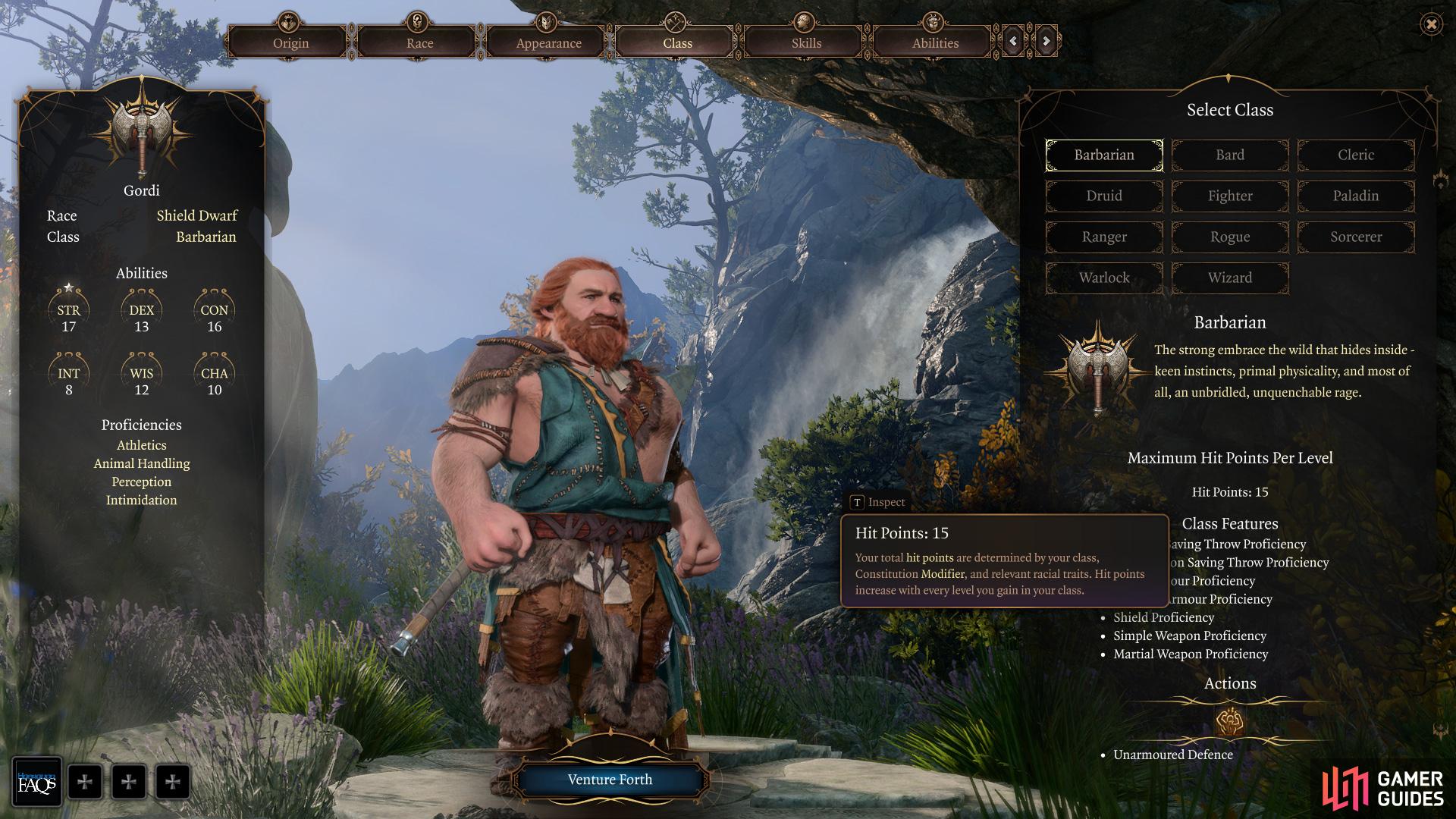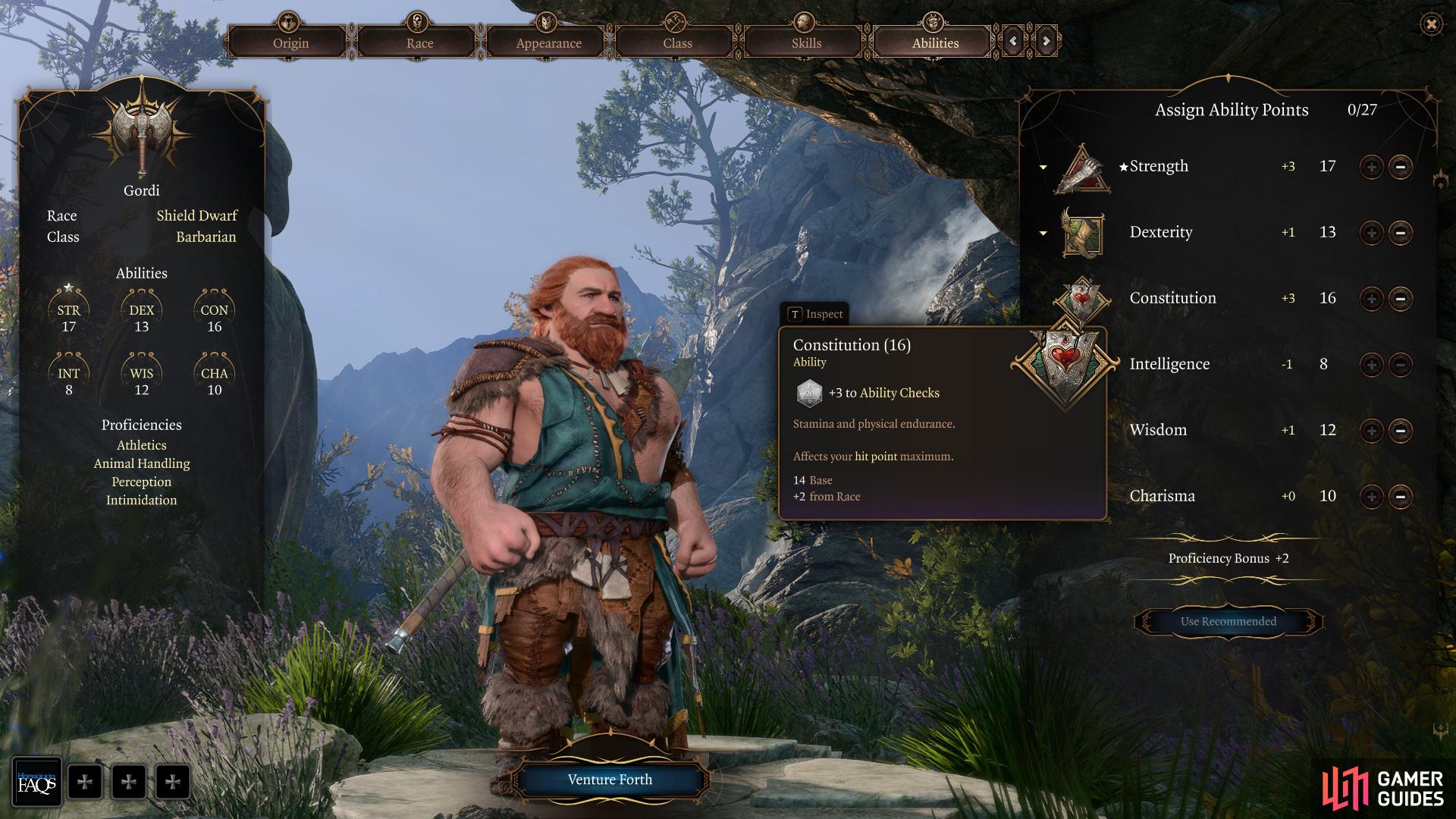Hit Points are a fairly ubiquitous statistic in RPGs, and the concept is simple - Hit Points represent how difficult it is to kill a character. Every time a character levels up, they’ll gain Hit Dice, which, along with a character’s Constitution modifier, determine their Hit Points. This page will explain how Hit Dice work and how Hit Points are determined in Baldur’s Gate 3.
Hit Dice and Hit Points in Baldur’s Gate 3¶
Being an adventurer is a dangerous line of work - critters inhabiting the wilderness aren’t always the friendliest, especially when you start pillaging, as adventurers are wont to do. When violence breaks out, sometimes it’s not a one-sided affair, and enemy attacks that are successful will deal damage, reducing a target’s Hit Points. Hit Points have always been a somewhat nebulous catch-all that includes various factors - physical and mental - that collectively determine how hard it is to down a character. A dagger to the eye is a dagger to the eye, and Hit Points don’t represent a character’s ability to survive being vivisected - rather, a character with fewer Hit Points may actually get that aforementioned “dagger to the eye”, whereas a more trained character can turn a deathblow into a glancing shot. Then again, sometimes that ogre is just really big, or that otyugh has thick hide, a troll may be supernaturally resilient, and a dwarven barbarian may just be too damned stubborn to realize when he’s spent. Lore-wise, all of these factors contribute to a character’s Hit Points, but gameplay-wise your Hit Points largely come from two sources: Your character level, and your Constitution score.
Different classes have different Hit Dice, which determine how many Hit Points they gain each level. Characters have a number of Hit Dice equal to their Experience Level.
Hit Dice by Class in Baldur’s Gate 3¶
A character receives a variable number of Hit Points per character level depending on their class. Different classes have different Hit Die, which are literally just the dice rolled to determine your Hit Points. Less combat-inclined classes like Wizards have lower Hit Dice values (d6) than, say, dedicated warriors, like Fighters (d10), and consequently tend to have fewer Hit Points. Each classes Hit Die are as follows:
| Class | Hit Die |
|---|---|
| Barbarian | d12 |
| Bard | d8 |
| Cleric | d8 |
| Druid | d8 |
| Fighter | d10 |
| Ranger | d10 |
| Rogue | d8 |
| Paladin | d10 |
| Sorcerer | d6 |
| Warlock | d8 |
| Wizard | d6 |
A character adds their Constitution modifier to their Hit Points for each Hit Dice they have.
How Hit Dice and Constitution Determine Hit Points¶
Despite being called “Hit Die”, there’s surprisingly little rolling involved when it comes to determining your Hit Points in Baldur’s Gate 3. As in, none. At 1st-level your character will have the maximum Hit Points per Hit Die - a Fighter will have 10 Hit Points, a Wizard will have 6 Hit Points.
To this base amount of Hit Points, each character will add (or subtract) their Constitution modifier. Since your stats can only range from 8 - 17, this effectively means your Constitution Modifier will be -1 to +3, and dumping excess ability points into Constitution for a Hit Point boost isn’t a terrible idea. The aforementioned Fighter and Wizard above would thus start the game with anywhere from 5 to 9 Hit Points or 9 to 13, respectively.
Every time you level up, you gain another Hit Dice appropriate to your class. A 2nd-level Barbarian, Druid, Ranger and Sorcerer all have two Hit Die, even though the values of those many vary. Just like at 1st-level, no Hit Point rolls are made in Baldur’s Gate 3 on subsequent level-ups, as after 1st-level you gain a number of Hit Points equal to half your Hit Dice, plus your Constitution modifier. For example, assume you rolled a 1st-level Fighter (1d10 HD) with 14 Constitution (+2 HP/HD). They’d start the game with 12 Hit Points (maxed 1d10 + 2 Constitution modifier). Upon ascending to 2nd-level, they’d gain half their Hit Dice (d10/2 = 5) plus their Constitution modifier again (+2), adding +7 to their Hit Point total for 19 Hit Points as a 2nd-level Fighter. They’d gain the same at 3rd-level and 4th-level, etc.
| Hit Dice | Hit Points/Level |
|---|---|
| d6 | 3 |
| d8 | 4 |
| d10 | 5 |
| d12 | 6 |



 Sign up
Sign up
No Comments